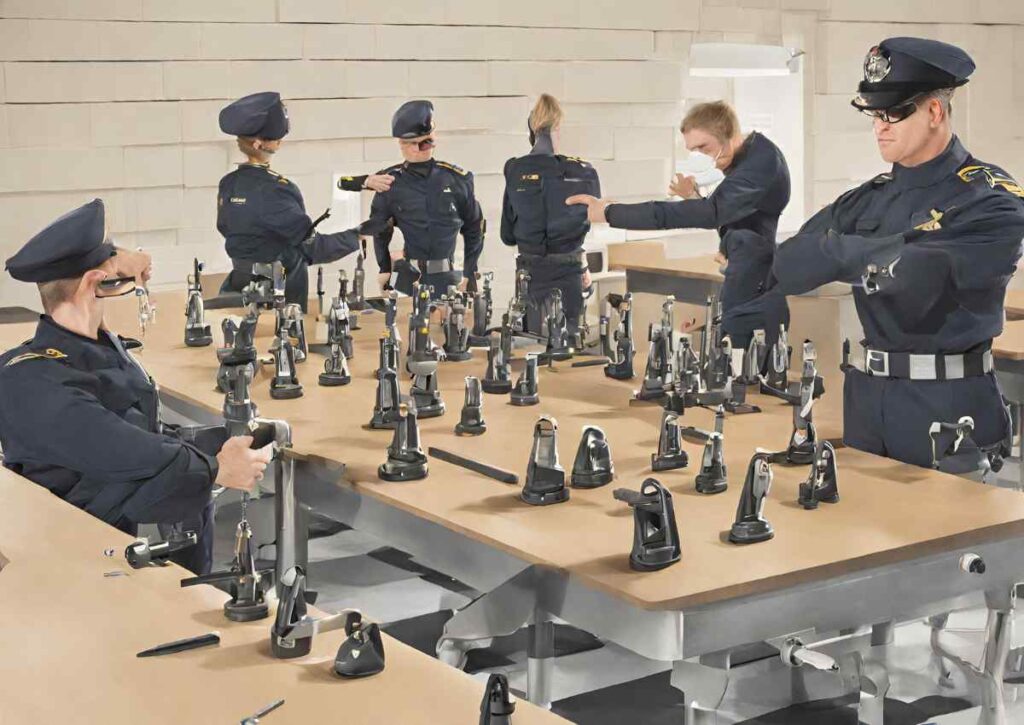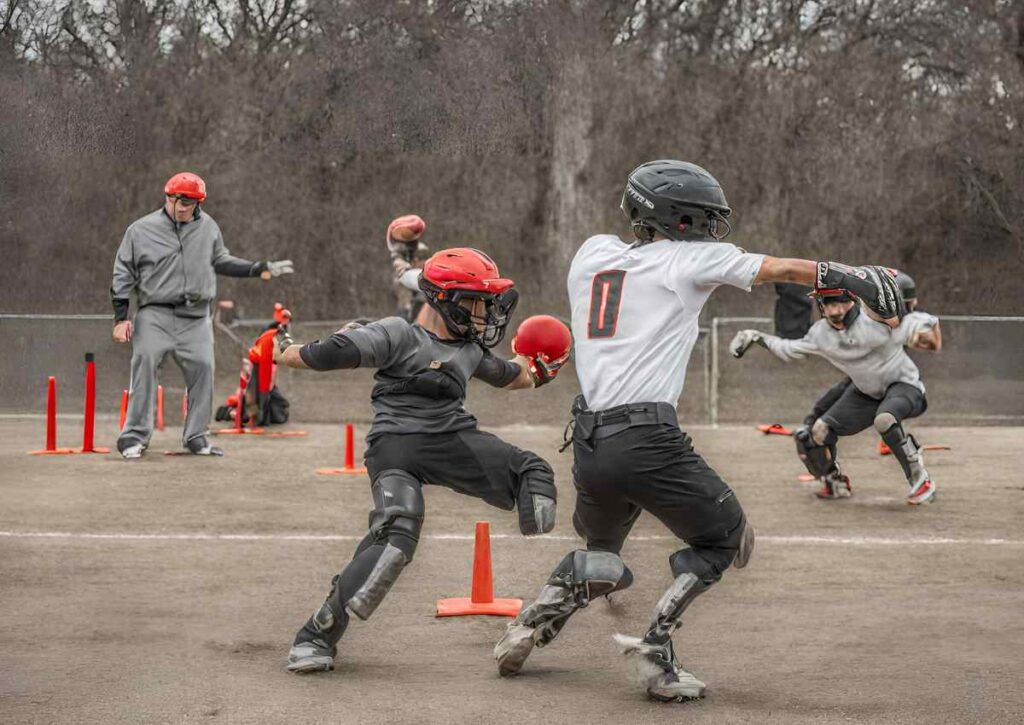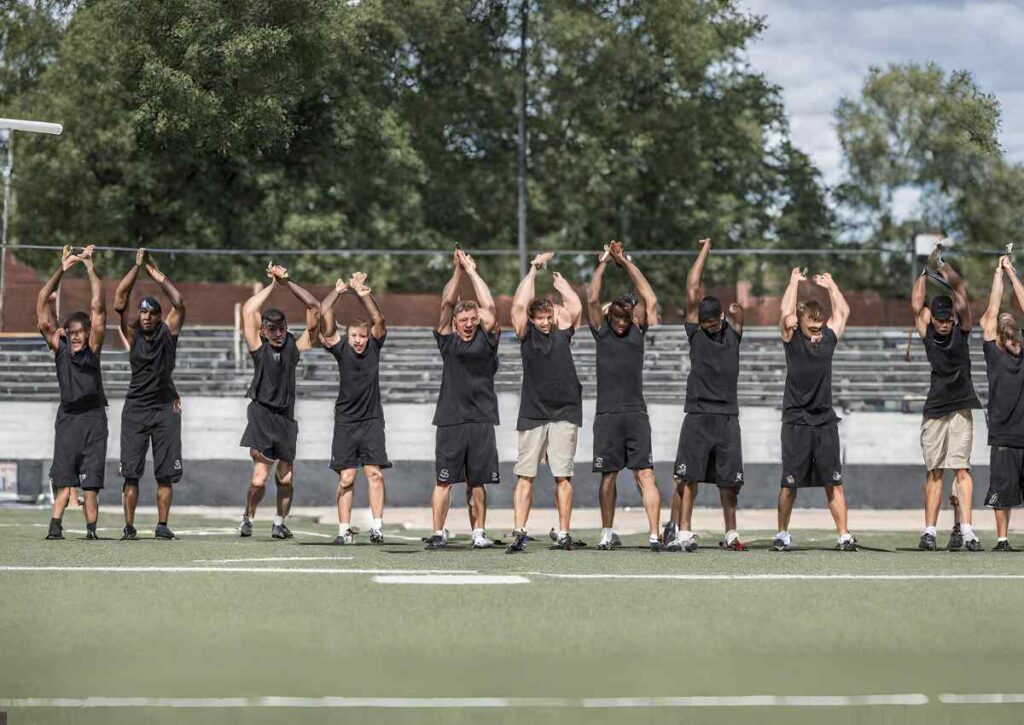In the realm of American football, mastering fundamental skills is paramount for success on the field. One such fundamental exercise that has garnered attention is the Omaha Drill.
This drill, with its various iterations, serves as a cornerstone for player development, emphasizing key aspects of the game such as agility, strength, and strategy.
Let’s delve deeper into the nuances of the Omaha Drill, exploring its variations, prevalence in different levels of play, and its significance in player evaluation and safety.
Exploring the Drill: Variations and Setup
The Omaha Drill typically involves two players positioned three yards apart, ready to engage in a controlled yet intense confrontation.
The setup includes a corridor delineated by three blocking bags on each side, forming a narrow pathway for the players.
This corridor, approximately three feet wide and nine feet long, serves as the arena for the drill’s action-packed exchange.
Executing the Drill: Rules and Objectives

Upon the signal to begin, the two players charge towards each other within the corridor. The drill concludes when one player is either tackled to the ground, pushed out of bounds, or if a ball carrier is tackled.
Another variation adds the stipulation that the ball carrier must continue running until scoring a touchdown, adding an extra layer of challenge and endurance to the exercise.
Prevalence in Football Practice

The Omaha Drill holds significant prevalence in the training routines of many high school and college football teams.
Often employed as an initiation into full-contact practice sessions, it serves as a litmus test for players transitioning from non-contact drills to live gameplay situations.
Coaches utilize this drill not only to evaluate players’ physical prowess but also to instill the necessary mindset for the rigors of competitive football.
Controversy and Evolution

While the Omaha Drill has long been a staple in football training, it has not been without controversy.
In May 2019, concerns over player safety led to its ban from NFL team practices, following a trend of declining usage.
The decision reflected a growing recognition of the risks associated with full-contact drills, particularly for veteran and high-profile players.
Despite its ban in the NFL, some teams had previously embraced the drill as a symbolic start to intense practice sessions, showcasing its enduring legacy in football culture.
Adaptations and Safety Measures
In response to safety concerns, teams have experimented with modified versions of the Omaha Drill aimed at reducing injury risks while preserving its developmental benefits.
Reports indicate the implementation of safer variants by teams such as the Detroit Lions, under the guidance of innovative coaches like Matt Patricia.
These adaptations underscore the ongoing evolution of football training methods in alignment with evolving standards of player safety and well-being.
Conclusion: Embracing Tradition while Prioritizing Safety
In the ever-evolving landscape of football training, the Omaha Drill stands as a testament to the sport’s rich tradition of physicality and skill development.
However, its ban from NFL practices reflects a broader shift towards prioritizing player safety and well-being.
As the game continues to evolve, so too must its training methodologies, balancing tradition with innovation to ensure a safer and more sustainable future for players at all levels.
The Omaha Drill, with its storied history and enduring legacy, remains a fundamental component of football culture, embodying the spirit of competition and resilience ingrained in the sport’s DNA.
FAQs
What is the purpose of the Omaha Drill in football training?
The Omaha Drill serves as a fundamental exercise aimed at developing players’ agility, strength, and tackling technique.
It simulates game-like situations, helping players adjust to the physical demands of live gameplay.
Are there different variations of the Omaha Drill?
Yes, there are several variations of the Omaha Drill. One common version involves two players positioned three yards apart, charging at each other within a narrow corridor.
Another variation adds the challenge of the ball carrier continuing to run until scoring a touchdown.
Why is the Omaha Drill often used at the beginning of full-contact practice sessions?
Coaches frequently utilize the Omaha Drill to kick off full-contact practice sessions as it serves as an effective transition from non-contact drills to live gameplay.
It helps players acclimate to the intensity and physicality of full-contact situations, setting the tone for the practice session.
Has the Omaha Drill faced any controversy in football training?
Yes, the Omaha Drill has faced controversy, particularly regarding player safety concerns.
In response to these concerns, the NFL officially banned the drill from team practices in May 2019, reflecting a broader trend towards prioritizing player well-being.
How have teams adapted the Omaha Drill to address safety concerns?
In light of safety considerations, teams have explored modified versions of the Omaha Drill aimed at reducing injury risks.
These adaptations may include adjustments to the drill’s setup or rules, emphasizing controlled contact and minimizing the potential for player collisions.
What is the significance of the Omaha Drill’s ban in the NFL?
The ban of the Omaha Drill from NFL team practices underscores the league’s commitment to player safety and injury prevention.
It reflects a growing recognition of the risks associated with full-contact drills, prompting a reevaluation of training methodologies to ensure the well-being of players.
Also Read
Cotton Drill: Crafting Comfort With Precision









